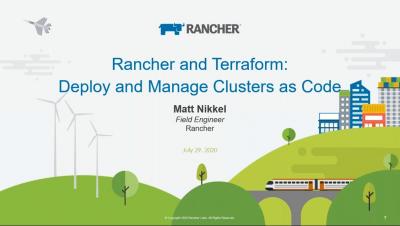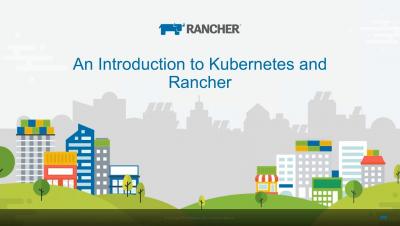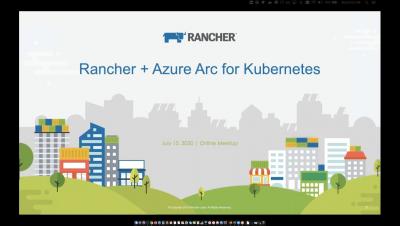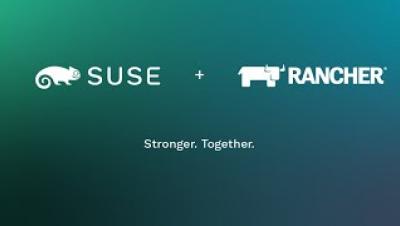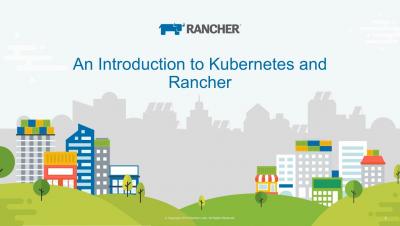Operations | Monitoring | ITSM | DevOps | Cloud
July 2020
Global Energy Leader Transforms Technology and Culture with Kubernetes
When your company is born in the first Industrial Revolution, how do you stay relevant in the digital age? For Schneider Electric, the answer is continuous innovation, driven by its heritage in the electricity market. Founded in the 1880s, Schneider Electric is a leading provider of energy and automation digital solutions for efficiency and sustainability.
Deploy an Ingress Controller on K3s
Kubernetes provides a powerful networking model for microservices. One of the pillars of this model is that each pod has its own IP address and is directly addressable within the cluster. As a consequence, each Kubernetes cluster usually has a flat virtual network that external hosts can’t reach directly. That means routing traffic from clients outside the cluster to services deployed inside the cluster requires some additional work.
Connecting the World's Travel Trade with Kubernetes
When you book a hotel online or with a travel agent, you’ve probably got a wish list that has to do with the size of the room, view, location and amenities. You’re probably not thinking about the technology in the background that makes it all happen. That’s where Hotelbeds comes in. The business-to-business travel technology company operates a hotel distribution platform that travel agents, tour operators, airlines and loyalty programs use to book hotel rooms.
Intro to K8s and Rancher - 2020-07-24
The Power of Innovation
CEO and Co-Founder Sheng Liang has a saying about how we approach open source at Rancher Labs: “Let a thousand flowers bloom.” When we set out to build something, we don’t know if it will turn into a successful product, spark another product idea or be a good idea that doesn’t get traction. The joy is in the journey.
July 2020 Online Meetup EMEA - A Look at Rancher and Prisma
Automate k3OS Cluster Registration to Rancher with Argo Workflows and Scripting Magic
As the Kubernetes ecosystem grows, new technologies are being developed that enable a wider range of applications and use cases. The growth of edge computing has driven a need for some of these technologies to enable the deployment of Kubernetes to low-resource infrastructure to the network edge. In this blog post, we are going to introduce you to one method of deploying k3OS to the edge. You can use this method to automatically register your edge machine to a Rancher instance as a control plane.
July 2020 Online Meetup - Rancher + Azure Arc for Kubernetes
A Clear Path to Automated Optimization of Application Performance
Rancher has helped thousands of organizations manage their transitions to containerized applications and Kubernetes. With its innovative distribution and suite of services, Rancher has given IT and DevOps teams the roadmap they needed to drive Kubernetes success. Given the complexity of Kubernetes and the shortage of engineers with Kubernetes-specific skills, Rancher’s offerings meet a critical and growing market need.
Prometheus Metric Federation with Thanos
Prometheus is a CNCF graduated project for monitoring and alerting. It is one of the most widely used monitoring and alerting tools in the Kubernetes ecosystem. Rancher users can leverage Prometheus quickly by using the built-in monitoring stack. Prometheus stores its metrics as a time series database on the local disk. Prometheus local storage is limited by the size of the disk and amount of metrics it can retain.
MPAC Cuts Cloud Costs by 40 Percent with Rancher
“Rancher has solved a host of issues facing us as a publicly funded organization – driving predictability, easing cluster management and upholding the right security profile. Rancher was the obvious choice to meet these goals.” Chruz Cruz, Senior Infrastructure Architect, MPAC
What is Rancher?
Create Reproducible Security in Kubernetes with Helm 3 and Helm Charts
With the growing popularity of containerized applications, organizations and startups at all levels need to manage their Kubernetes deployments more safely at scale. Today, there is an expanding list of tools and services that can help do this. One of these services is the package manager known as Helm.
Why SUSE Acquired Rancher Labs
My favorite ice cream store is just off Richmond Green, close to where I live in West London. On sunny days, locals queue around the block to buy their fantastic gelatos and sorbets. Every one of their customers knows that they could easily nip into the supermarket around the corner to buy hermetically sealed chocolate ice cream, but they queue anyway. Why?
Install SAP Data Intelligence 3.0 on an RKE Cluster
Rancher and SAP have been working on a dedicated verification of SAP Data Intelligence 3 (SAP DI) on Rancher Kubernetes Engine (RKE) cluster and Longhorn storage platform. This blog will guide you on how to properly install SAP DI on an RKE cluster.
SUSE Enters Into Definitive Agreement to Acquire Rancher Labs
I’m excited to announce that Rancher has signed a definitive agreement to be acquired by SUSE. Rancher is the most widely used enterprise Kubernetes platform. SUSE is the largest independent open source software company and a leader in enterprise Linux. By combining Rancher and SUSE, we not only gain massive engineering resources to further strengthen our market-leading product, we are also able to preserve our unique 100% open source business model.


